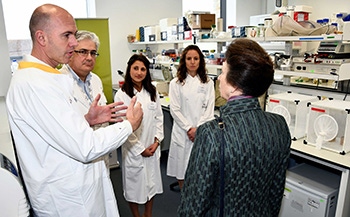Dr. Simon Carpenter, Head of Entomology at The Pirbright Institute, explains to HRH The Princess Royal how their research helps policy makers and farmers predict and control outbreaks of livestock disease transmitted by insects such as biting midges.Copyright: The Pirbright Institute ©2017
